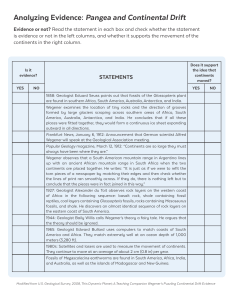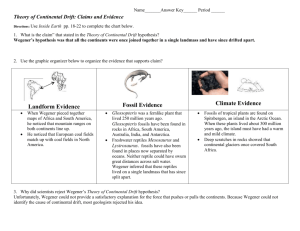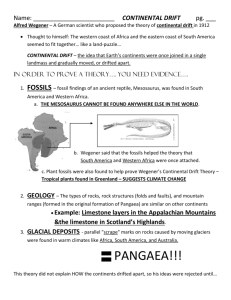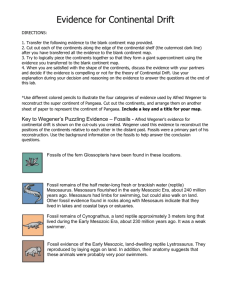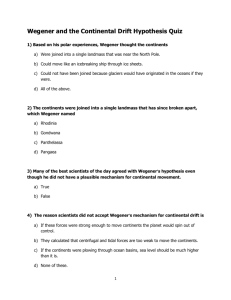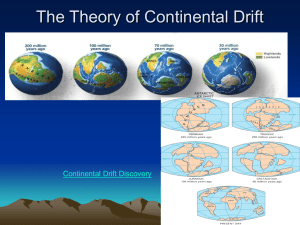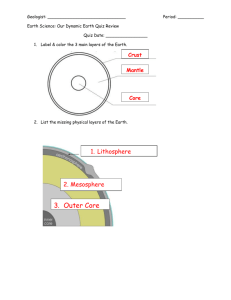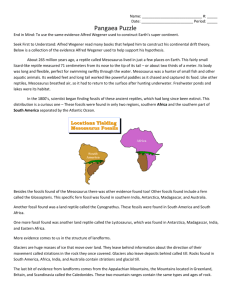Pangaea Evidence
advertisement
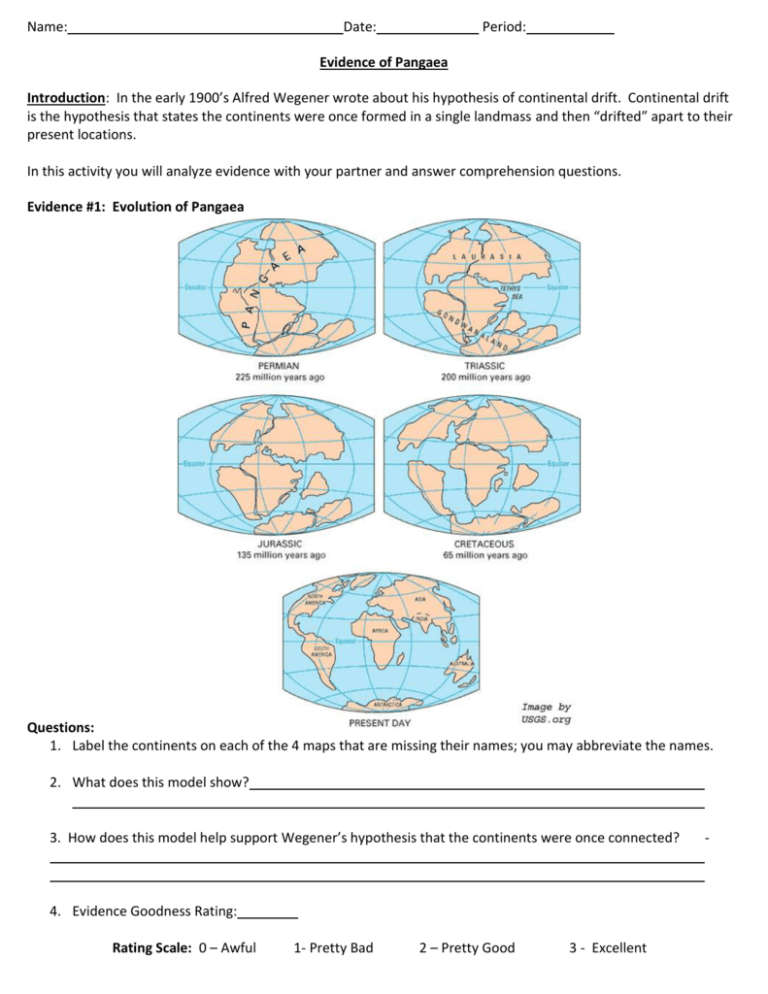
Name: Date: Period: Evidence of Pangaea Introduction: In the early 1900’s Alfred Wegener wrote about his hypothesis of continental drift. Continental drift is the hypothesis that states the continents were once formed in a single landmass and then “drifted” apart to their present locations. In this activity you will analyze evidence with your partner and answer comprehension questions. Evidence #1: Evolution of Pangaea Questions: 1. Label the continents on each of the 4 maps that are missing their names; you may abbreviate the names. 2. What does this model show? 3. How does this model help support Wegener’s hypothesis that the continents were once connected? 4. Evidence Goodness Rating: Rating Scale: 0 – Awful 1- Pretty Bad 2 – Pretty Good 3 - Excellent - Evidence #2: A map of areas with glaciations The white areas represent areas of glaciations. Image from http://ocw.uci.edu Questions: 5. What is this map showing? 6. Why is there a little map included at the top of the big map? 7. How does this model help support Wegener’s hypothesis that the continents were once connected? (Why is there ice in Africa?) 8. Evidence Goodness Rating: Evidence #3: The Curious Case of Mesosaurus (article from teacher edition of textbook) About 265 million years ago, a reptile called Mesosaurus lived in just a few places on Earth. This fairly small, lizard-like reptile measured 71 centimeters from its nose to the tip of its tail – or about two thirds of a meter. Its body was long and flexible, perfect for swimming swiftly through the water. Mesosaurus was a hunter of small fish and other aquatic animals. Its webbed feet and long tail worked like powerful paddles as it chased and captured its food. Like all other reptiles, Mesosaurus breathed air, so it had to return to the surface after hunting underwater. Freshwater ponds and lakes were its habitat. In the 1800s, scientists began finding fossils of these ancient reptiles, which had long since become extinct. These fossils were found in only two regions, southern Africa and the southern part of South America. The shaded areas on the map show where fossils of Mesosaurus have been discovered. This distribution is a curious one—only two regions far from each other and separated by the Atlantic Ocean. What could explain this distribution? Questions (USE TEXTUAL EVIDENCE): 9. Is it likely that Mesosaurus swam back and forth across the Atlantic Ocean? Explain. 10. What could explain the distribution of Mesosaurus fossils? 11. How does this article help support Wegener’s hypothesis that the continents were once connected? 12. Evidence Goodness Rating: Evidence #4: Map of the Continents Questions: 13. What does this model show? 14. How does this model help support Wegener’s hypothesis that the continents were once connected? 15. Evidence Goodness Rating: 16. Reasons for your rating: Concluding Questions: 1. Based on what you discovered through evidence, explain the different ways we know Wegener’s hypothesis is true? (4 reasons) 2. Which evidence do you think was the most helpful to you? Why?
